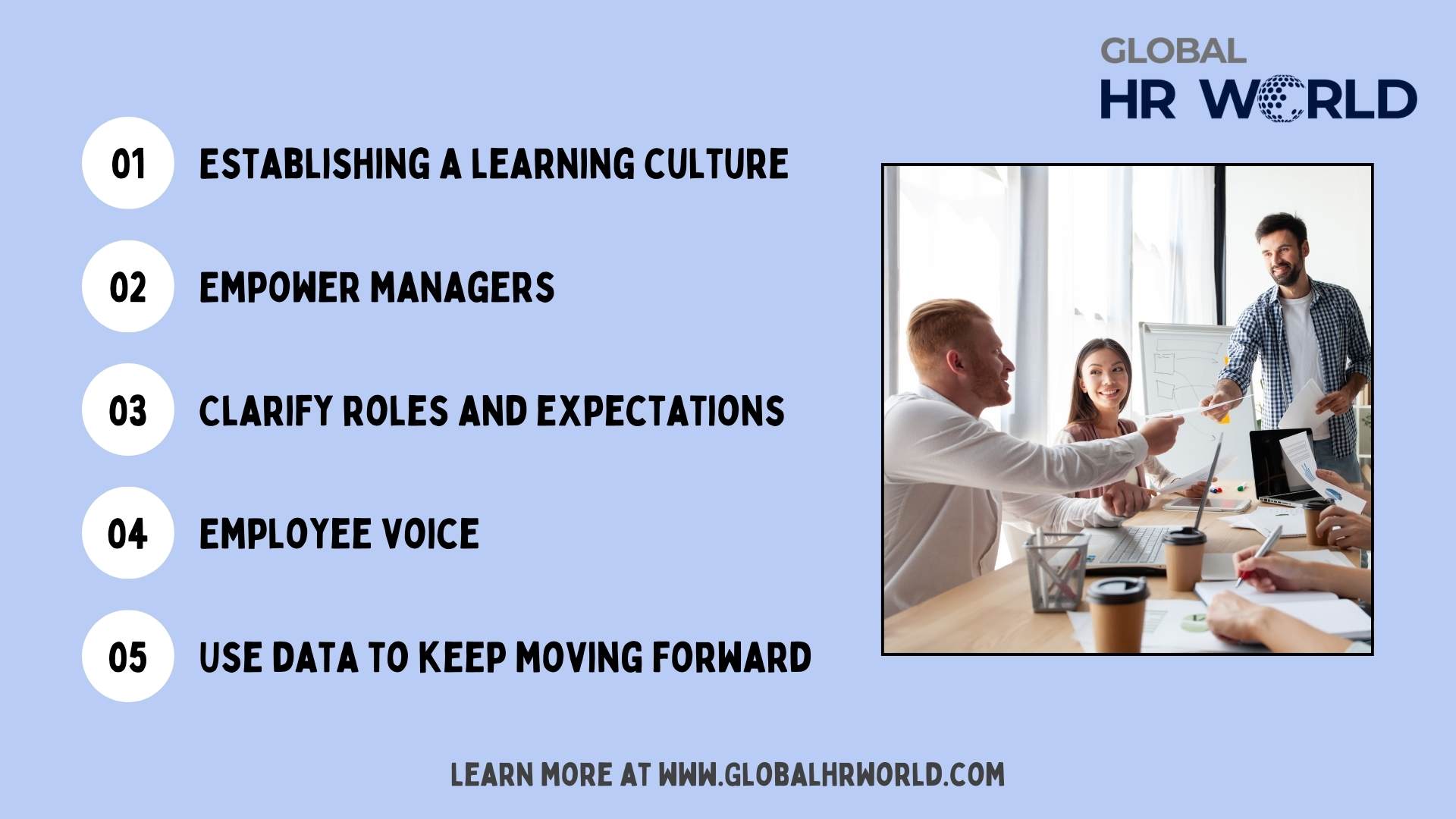Organizations understand the importance of managing employee performance for success, but not many realize what it means to enable employee performance. Just like sales enablement, performance enablement means providing employees with the tools and capabilities needed to perform a given task, meet objectives, and improve productivity. But what is performance enablement? If it’s not in your employee management techniques already, it definitely should be.
What is performance enablement?
Performance enablement is a process that focuses on helping employees reach peak performance levels. It’s different from performance management because it focuses on providing resources to employees and managers to help them achieve their best performance rather than focusing on retroactive performance assessments.
Performance enablement offers each employee a toolbox that’s tailored just for them, helping them do their best work. Unlike old-school performance reviews that only look backward, performance enablement focuses on ongoing support and real-time feedback. This approach equips everyone in the company with the resources and guidance they need to improve, achieve their goals, and grow their skills continuously. It is all about empowering employees, enabling them to contribute effectively to the company’s success while also advancing their own careers through continuous learning and achievement.
A few key enablers of employee engagement include,
- Effective communication
- Access to resources
- Training and development
- Supportive leadership
- Positive work environment
- Work-life balance
- Change management/cultural transformation
- Capability building for performance enhancement
- Assessment and development programs
- Performance management systems (PMSs)
The ultimate goal of employee performance enablement is to give employees the appropriate resources and tools they need to drive an organization toward success while maximizing their potential. This is why more and more businesses are embracing performance enablement.
5 ways of establishing a successful performance enablement model
A successful performance enablement model is built on several key elements that collectively support a dynamic and engaging work environment. The focus is on nurturing talent, fostering open communication, and aligning personal goals with the strategic aims of the organization in a way that is transparent.

1 – Establishing a learning culture
There are many tools and resources out there that can help your employees become better at the job they already know how to do. But what about the parts of the job, project or future roles that they don’t know how to do? To bridge the knowledge gaps, you need a performance enablement tool that’s powered by learning.
Even if you provide employees with all the tools and resources they need to perform better, if the work environment doesn’t promote continuous learning and development (L&D), you won’t get too far. The key to enabling employee performance is to foster a learning culture that prioritizes the employee experience. This means putting your organization’s people at the center of all decision-making. Let’s take a look at some best practices for establishing a human-centric learning culture that enables performance.
- A defined learning culture
- Diagnosing individual performance needs
- Ability to take risks and innovate
- Assign accountability
Want to know more about the role of development plans in enabling performance? Read our blog on A 5-Step Framework for Creating a Professional Development Plan.
2 – Empower managers
Managers play the most important role in performance enablement. The relationship between managers and their teams can make or break the overall performance of an organization. So, managers must build strong connections with their team by helping them to focus on their personal and as well as professional goals, treating them as independent individuals, and coaching and challenging them. Managers will be far more effective if they develop as coaches who collaborate with employees to identify and remove roadblocks to success.
HR leaders must assess manager roles and adjust their priorities — focusing managers less on operational tasks and more on coaching their team, for example. HR leaders should also work with learning and development leaders to add practical, scenario-based training to learning management systems. This type of training helps managers hone their coaching skills on an ongoing basis.
3 – Clarify roles and expectations
To properly enable employee performance, an organization must first be in alignment with what that looks like to them. Business leaders should define what performance enablement means to their organization and then align this with how the organization can develop their employees’ careers. Individual, team, and organizational goals should be communicated, along with updates, as performance expectations and business priorities evolve.
Employees should have on-demand access to goal dashboards so they can view progress, adjust learning goals, and seek feedback from their managers. This can provide clarity on the employee’s current skill level and what tools they need to provide better results. Thus, the organization can give their employees what they need not only to improve performance and meet business goals but also to further their professional development. So, it becomes a win-win situation.
4 – Employee voice
Giving people a voice empowers them. They feel listened to and encouraged to use their knowledge to improve the business and innovate. Often, giving employees a voice is one of the easiest ways to improve employee engagement. It could be as simple as setting up a survey or a suggestions box. Or it can be installing an “idea box” where staff can put/post their ideas offline/online, comments can be added by other peers, and people can even vote on them. You can also host more formal events designed to encourage more employee engagement.
5 – Use data to keep moving forward
Managers can leverage performance data points to hold employees accountable and gauge their contributions to overall business objectives. Data also informs each manager’s efforts to align individual goals with desired business outcomes. Make sure employees can see this data. Performance data serves additional purposes, such as helping managers identify skills gaps and learning opportunities, providing personalized coaching, and recognizing achievement.
Conclusion
When enabling employee performance, it is important to understand that enabling performance and managing it are two different approaches. Performance enablement is about providing employees with the tools and resources they need beyond training to help them perform better. By performing better, employees cannot only help achieve business goals but also develop their careers. Additionally, strong performance enablement, coupled with a culture of learning and growth, will help organizations ensure that all employees have the tools they need to perform at their very best — now and in the future.
Infographic

Knowledge Check!
Frequently Asked Questions (FAQs)
What is performance enablement?
Performance enablement is a process that focuses on helping employees reach peak performance levels. Performance enablement offers each employee a toolbox that’s tailored just for them, helping them do their best work.
What are performance enablers?
Employee performance enablers include:
Effective communication
Access to resources
Training and development
Supportive leadership
Positive work environment
How do you measure employee enablement?
Gathering feedback with regular surveys can provide insights/data as to whether or not your organization is on the right track when it comes to performance enablement.



